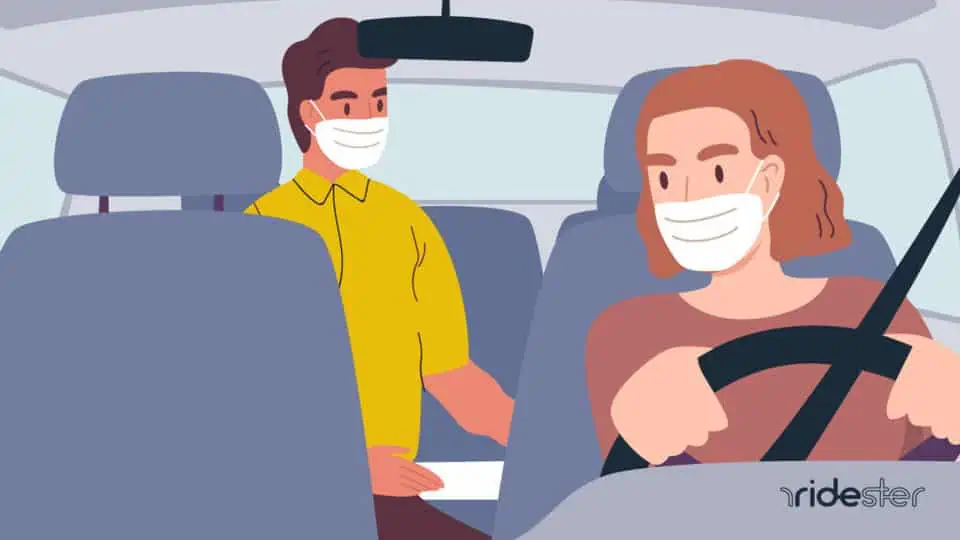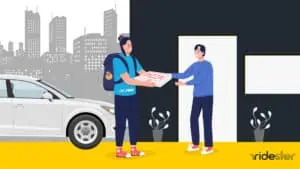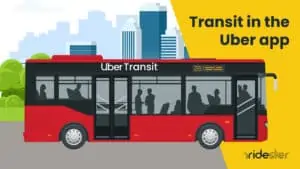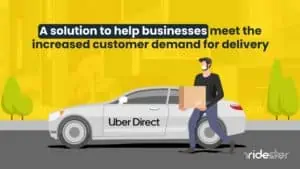Key Takeaways
- Uber drivers can explore options like personal loans, private auto loans, payday loans, and SBA loans, each with varying eligibility criteria and interest rates.
- As independent contractors, Uber drivers may face hurdles in loan approval due to inconsistent income and the need for solid income verification.
- Interest rates vary based on risk assessment and credit score, with repayment terms impacting the total amount paid over the loan’s duration.
- High-risk loans, irregular income, credit score impact, and legal complexities are key considerations; alternatives include crowdfunding, peer-to-peer lending, and credit cards.
- Understanding the Uber Driver as a 1099 Contractor
- Types of Loans Available for Uber Drivers
- Eligibility Criteria for Uber Driver Loans
- Applying for a Loan: a Step-by-Step Guide
- Interest Rates and Repayment Terms For Uber Driver Loans
- Risk and Considerations of Taking On a Loan as an Uber Driver
- Alternative Financing Options
- Financial Management Tips for Uber Drivers
- Resources and Support for Uber Drivers
- Frequently Asked Questions
- Wrapping Up
Understanding the Uber Driver as a 1099 Contractor
The most important aspect to understand about driving for Uber is that Uber drivers aren’t employees. Instead, Uber qualifies all rideshare drivers as independent contractors.
Accordingly, Not only do Uber drivers not receive benefits like unemployment, but there’s also no solid income verification for them.
This is crucial when it comes to filing for taxes. Uber doesn’t deduct taxes from your income but still tallies your earnings.

Uber driver-partners receive two distinct tax forms, Forms 1099, hence their nickname as 1099 contractors.
These forms include all the drivers’ earnings, including rides, tips, commission, and referral bonuses.
You might find the figure higher than what your earnings actually are, but you can report the extra amount as business expenses.
Uber will freely provide you with these forms if you’ve completed over 200 rides, and if your income is over $20,000. However, this figure varies from state to state.
After requesting these forms from Uber, you can file them to the IRS to report your rideshare income. Yet, Uber will most likely submit these forms automatically.
This income verification isn’t essential for filing taxes only, but it can also qualify as documentation of steady income when applying for loans.
Types of Loans Available for Uber Drivers
Since leasing from Uber is of the past, Uber drivers now need to finance their cars and other expenses through more traditional methods.
Unfortunately, Uber drivers might have a hard time applying for a loan, especially since they have a somewhat limited income, as well as needing to verify their source of income.
To make matters easier, here are some of the most common types of loans Uber drivers can apply for:
1. Personal Loans
Your first option if you need some extra cash would be to apply for a personal loan. These loans have the best interest rates and the most flexible terms.
However, personal loans can be secured or unsecured. Secured loans are easy to obtain, but they need some type of collateral, such as liquid assets or your car.
In contrast, you need to demonstrate a stable income and an exceptional credit score to get approved for an unsecured loan. Yet, you won’t have to put down any collateral.
2. Private Auto Loans
Private auto loans work like bank auto loans, only your lender would be the auto shop. These can be helpful if you need to get a car for Uber as the shop can provide personalized loan offers.
Financing a car through a dealership might have better rates as well as ease the requirements. They might even allow you to swap a car lease. Still, this shouldn’t be your first option, as banks are generally safer.
3. Payday Loans
Payday loans are short-term loans with a relatively high-interest rate. The reason these loans are so popular is that they grant you instant access to cash.
You can get a portion of your next paycheck as a loan, then pay it back in 30 days or less, with interest.
While anyone can get approved for these loans, as long as they have proof of income, the loans aren’t available in 16 states as the high fees can’t be properly regulated.
4. SBA Loans
The Small Business Association has created many loan programs to help small businesses, including independent gig workers.
These types of loans are one of the best for rideshare drivers, as the SBA has lenient requirements, and regularly supports small businesses in times of need.
Eligibility Criteria for Uber Driver Loans
Each loan provider has their set of eligibility criteria. So, if you get rejected for a loan at a certain bank, you can still try your luck somewhere else.
Keep in mind that loans with higher interest rates have fewer criteria, which means you can still get a loan even with a bad credit score. Though, you’ll be paying more in the long run.
Typically, lenders inspect the following before approving your loan application:
- Credit score
- Debt-to-income ratio
- Steady Income
- Collateral
Brett’s Take: Thoughts From an Expert
Securing a loan as an Uber driver can be challenging due to the perceived inconsistency of gig economy income, and status of 1099-contractor.
Banks are generally hesitant to provide loans to those who rely on ridesharing as their primary source of income, as the high mileage and usage of the vehicle increase the loan’s risk.
Adding to the difficulty, a lower credit score, such as around 585, is often seen as unfavorable by lenders.
I’ve seen some drivers establish an LLC or simply listing ‘self-employed’ rather than specifying ‘Uber driver’ on loan applications to potentially increase the chances of approval.
Ultimately, it’s crucial for Uber drivers to consider their financial stability and credit history when seeking loans for car purchases.
For some, it may be more feasible to explore alternatives to traditional financing or to improve credit scores before applying.
Applying for a Loan: a Step-by-Step Guide
Applying for a loan is straightforward, as long as you know what to expect. So, here’s a walkthrough on applying for a loan:
Step 1: Assessing Your Finances
A successful loan application depends on two factors.
First, you need to carefully assess your financial situation. Do you already have debts that you’re struggling to pay?
Can you manage to regularly pay back the loan? And is getting a loan a better solution than slowly saving up cash?
Second, you need to prepare ahead. If you’ll pay back the loan over five years, it’s crucial to have a stable income to cover the repayments.
Step 2: Preparing the Documents
If you ultimately decide on getting a loan, you should prepare all the necessary documents.
Fortunately, you can use your bank statements or your 1099 forms as proof of income. Paired with a valid social security number, you’ll be good to go.
Step 3: Deciding on a Loan
Lastly, you’ll need to decide on the type of loan you want to apply for. This depends on how much you can pay in interest and the amount of cash you need.
The loan terms must also be compatible with your conditions. It makes no sense to put your car down as collateral when it’s your main source of income as an Uber driver.
Instead, it would be better to apply for an unsecured loan.
Interest Rates and Repayment Terms For Uber Driver Loans
The interest rates are the fees the lenders charge you for the loan. It’s a percentage of the total loan, noted on an annual basis.
This rate generally depends on the risk you pose to the lender. Someone with a good credit history, a steady cash flow, and a stable job would be considered low-risk, as the bank would guarantee that the borrower will repay the loan at the appropriate time.
High-risk borrowers are those with a high debt-to-income ratio, no steady income, and no collateral. The high-interest rate acts as insurance for the lender, helping them recoup their loss in case of partial repayment.
As for the repayment term, the longer the loan term, the less you’ll have to pay monthly. However, you’ll also pay interest for longer, making for a larger sum overall.
Risk and Considerations of Taking On a Loan as an Uber Driver

Before applying for a loan, you should understand the following:
1. High-risk loans
You might find some loan options easier to obtain, especially payday loans and loans with collateral. However, keep in mind that these loans involve significantly high risk.
For example, you might lose money in the long run, or face severe consequences in case of a late loan payment.
2. Irregular pay
Since Uber drivers receive different earnings every day, predicting how much they’re able to pay at the end of each month is nearly impossible. For this reason, it’s best to consider smaller loans that you’re sure you’ll be able to pay.
3. Damaging your credit score
Getting a loan increases your debt-to-income ratio. This means you’ll find it harder to get approved for future loans. So, if you don’t need the initial loan, it’s best to hold off on it and find other ways to save money.
4. Seek legal advice
There’s more to loans than repayments and interest rates. Each lender has their unique terms and conditions. So, seeking legal help and reading the fine print is crucial.
Alternative Financing Options
If you’re ineligible for a loan, or you find loans too risky, there are other forms of financing available for Uber drivers, including:
- Crowdfunding: Your community can pull through by helping your crowdfunding campaign and raising money to help you achieve your dreams.
- Peer-to-peer lending: If you’re unable to qualify for a traditional loan, peer-to-peer platforms can take a chance on you. This allows multiple lenders to offer you a partial amount of your loan. Unfortunately, the fees are usually high.
- Credit cards: Credit cards allow you to borrow cash and pay it off the following month. This can be an ideal option as an emergency fund, or if you only require an advance on your next paycheck.
Financial Management Tips for Uber Drivers
Working as a rideshare driver might give you ultimate flexibility and freedom, but managing your finances can’t be easy.
So, here are a couple of tips that might help you save up some money, or set a budget to repay your loan:
- Work for different platforms.
- Make the most out of your time by driving during peak hours.
- Be friendly to passengers to warm extra tips.
- Create a budget for your rideshare business.
- Record your business expenses for the IRS to benefit from tax returns.
- Drive for Uber as a side hustle, but keep pursuing a steady income.
- Opt for weekly payouts to accurately follow a budget.
Resources and Support for Uber Drivers
There are numerous financial services available that cater to independent contractors, like Uber drivers.
For example, Giggle Finance has specific loan programs for rideshare drivers, depending on their needs. Whether you want to finance a car, maintain your vehicle, or pay expenses associated with the rideshare business, you’ll find what you require.
That’s not all. While Uber classifies their drivers as 1099 contractors, they still offer the drivers some benefits.
Uber has partnered with car dealerships, facilitating car financing and offering discounts for their drivers.
Frequently Asked Questions
How Does the Uber Pro Card Work?
Uber Pro Card is a debit card linked to your Uber account. It has numerous benefits, like allowing you to transfer funds between your Uber account and bank account, getting you cashback on refueling, automatic cash out after every trip, and a $150 backup balance.
Does Uber Eats Cash Out immediately?
Uber Eats has two payment options; Instant and Next-day.
If you choose Instant, you’ll cash out immediately after fulfilling orders if you link your debit card. However, if your payment option is your bank account, the payment will take time to process. Keep in mind that this option reduces your delivery fee.
As for the Next-day payout, you’ll typically receive your earnings the following day before 3 P.M.
Wrapping Up
Many lenders offer loans for Uber drivers since they’re independent contractors. Uber has also partnered with several car dealerships, allowing their drivers to receive discounts and car financing options.
Still, Uber drivers might face some difficulties obtaining a traditional loan, since they don’t have a steady source of income. They can use their 1099 forms as proof of income, but they’ll still be regarded as high-risk borrowers.
In this case, the only loans drivers might be eligible for are high-interest ones. So, before deciding on the loan, it’s crucial to assess your financial situation, set a budget, and seek legal advice.







